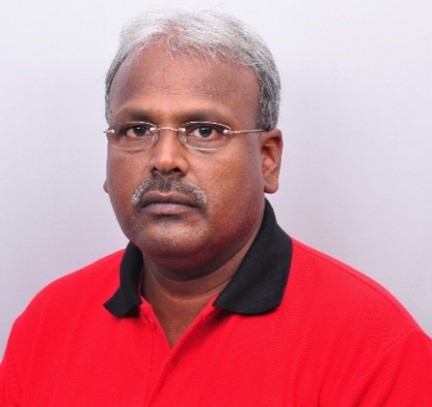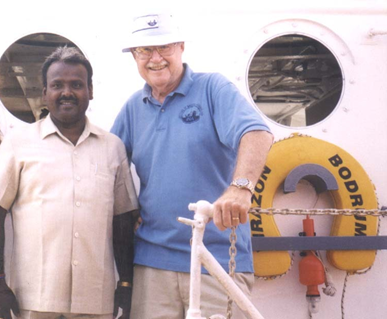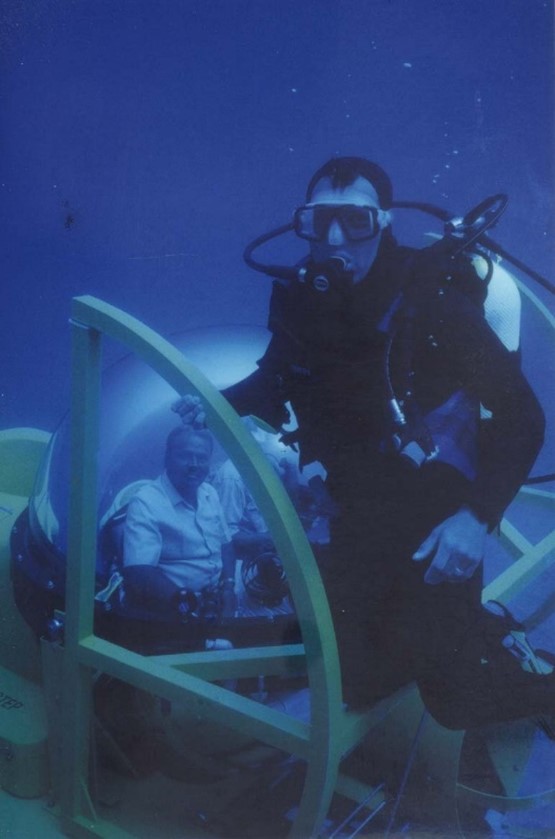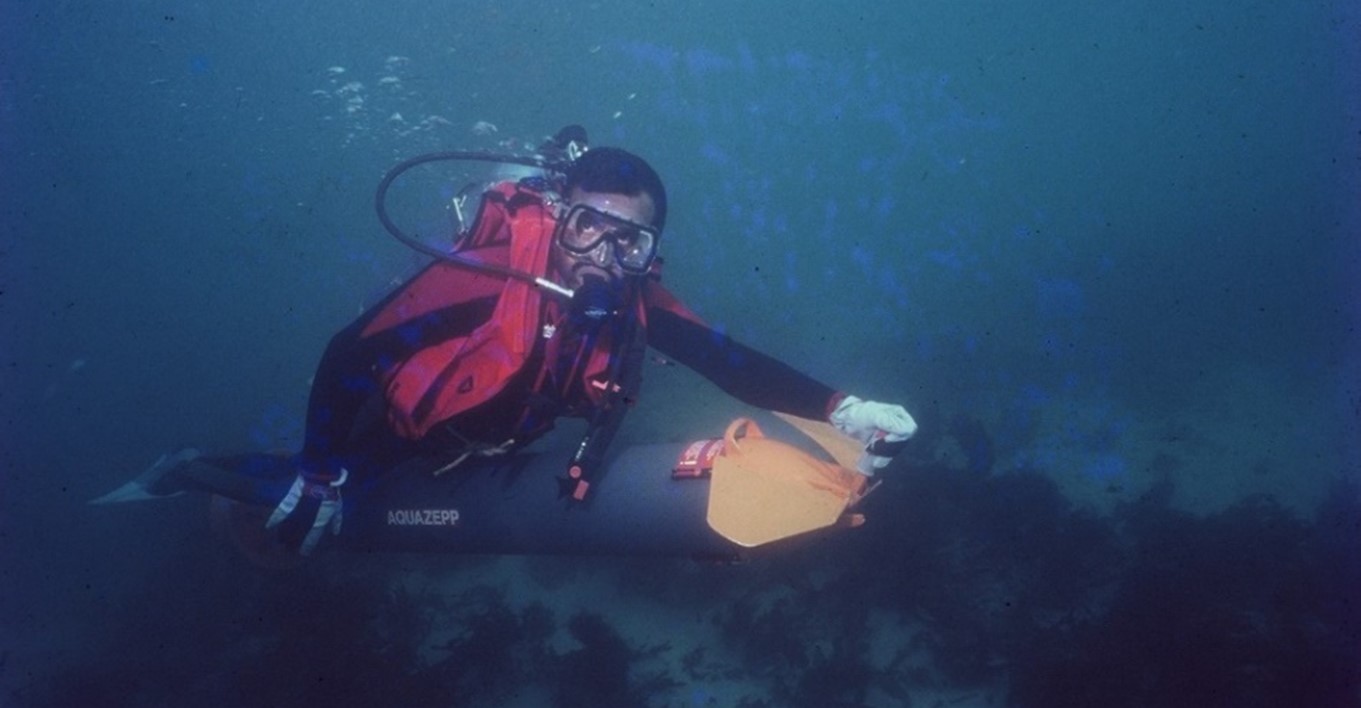Nationality: India
Institution: CSIR National Institute of Oceanography, India (retired)
EAA Member since: 2000

Photo courtesy of S. Tripati
TEA: Why do you do archaeology/How did you decide to do it?
S. Tripati: I was actually originally a history student! I completed my Master’s degree in history with a specialization in ancient India from Berhampur University, Odisha, India in 1985. In class, one of my teachers mentioned that the Professor of Archaeology at Deccan College, Pune had dated the stone tools used by prehistoric people. Out of curiosity, I asked how a stone could be dated. I thought dating would only provide the origin of the rock itself, and he explained the details of how this was possible by means of typology and relative dating. He also advised that anyone interested in pursuing archaeology could consider higher studies at either Deccan College, Pune or at the Institute of Archaeology (IA), Archaeological Survey of India, New Delhi. This inspired me to take the challenge of pursuing advanced studies in archaeology to gain a better understanding of the human past.
Since the Institute of Archaeology offers a two-year postgraduate diploma course in archaeology, and has a strong reputation, students from different parts of India compete to pass the entrance exam conducted by the UPSC. I successfully passed the exam and enrolled in the course. In time, I came to understand that archaeology, is a unique field that encompasses every aspect of humanity, bridging the gap from the unknown to the known.

Tripati (L) with Prof. George Bass (R) father of maritime archaeology on board in Bodrum, Turkey during the INA workshop in 2002. Photo courtesy of S. Tripati.
TEA: What is the most important and relevant part of your work?
S. Tripati: Archaeology is highly relevant to my work. Soon after being awarded my postgraduate diploma, I joined the CSIR-National Institute of Oceanography as a researcher, where I learned about diving and maritime archaeology. In October 1990, I secured a permanent position at the Marine Archaeology Centre (MAC) of the CSIR-NIO.
With my colleagues at NIO, I have discovered and published on many of the shipwrecks in Indian waters. Documenting them can be quite risky because they often sunk in places that are still dangerous to navigate today. One example of this is St. George’s Reef off Goa, where in 1998 we discovered the remains of a dhow (a small sailing vessel) that carried roof tiles and other ceramic building materials that had been produced at Basel Mission tile works in Mangalore. In this way, interesting new archaeological evidence could be added to Indian-European industrial history. I have recently published on this with two other colleagues (Hueglin/Joseph/Tripati 2023).

Tripati diving in the manned submersible Carolyn at the Pabuc Burun 6th c. BC shipwreck site off Bodrum, Turkey in 2002. Image courtesy of S. Tripati.
TEA: How do you see archaeology changing in the future?
S. Tripati: With the changing times and rapid changes in technology, it is not only archaeology that has changed, but rather all branches of science and social sciences. By adopting new methodologies in research, the data generated provides new interpretive dimensions. The approach which is introduced is essential for the needs of today. Previously, the dating of finds and objects was made on the comparative basis of e.g. coins, inscriptions, ceramic typology and stratigraphy, or comparative study with other sites from the same period. Now, besides carbon dating, and thermoluminescence, scholars can obtain a precise date for their find by AMS14C and OSL dating; these dates are much more accurate, which may change the history and culture of a site. Future technologies may support archaeology in other ways.
TEA: What/How does archaeology contribute to society at large?
S. Tripati: No doubt, archaeology has contributed to society in many different ways. Human beings are social. Therefore, anything related to humans is associated with society, which is well known: whether it is food habits, lifestyle, agricultural and/or industrial products, or even trade and cultural contacts near and far. These are known to us from the artefacts which are discovered during explorative surveys and excavation. It becomes much clearer once the findings have been carefully studied. Moreover, archaeological findings suggest how much society has progressed and developed. There is a saying: “If you don’t know your past, you have no future”. It means everyone should know the past (even the very earliest stages) onwards.
TEA: What is the biggest issue facing archaeology today?
S. Tripati: Archaeology has some major problems. Similarly, archaeologists also experience various challenges. The first and foremost problem is the destruction of archaeological sites by private people as well as by governmental agencies. We have a prime example of this in the destruction of Bamiyan Buddhas by the Taliban. Another clear example is the looting and destruction of artefacts. Both are weighty concerns, especially when we add the threats posed by natural calamities to the mix. In the early days, government agencies were responsible for the destruction of sites; now, it has been minimized because of awareness campaigns. It is vital to continue to enhance public awareness, as this is crucial to preventing the looting of artefacts and sculptures.
TEA: Any advice to new archaeologists just starting out?
S. Tripati: Archaeology is a subject that encompasses every branch of the social and natural sciences. Every archaeological fieldwork campaign, be it explorative survey or excavations, brings new dimensions to our findings because of the adoption of advanced tools and technology. As a result, the pace of archaeological fieldwork has significantly increased, allowing researchers to explore all periods of human culture. Archaeologists play a crucial role in uncovering some of the most important discoveries in human history. New archaeologists who are pursuing their careers in this field have the opportunity to contribute to these discoveries. New archaeologists learn essential techniques from experienced archaeologists to identify and analyze artefacts, manage excavations, and utilize modern technology to document their findings effectively, helping to interpret historical contexts.
TEA: How does archaeology affect your daily life?
S. Tripati: Archaeology has a unique effect on the lives of archaeologists, including me. Archaeology has a significant impact on my daily life. Whenever I come across an artefact, I am reminded of its history, development and distribution. I also examine how such artefacts have changed over time, considering aspects such as their distribution, evolution, condition and development, while seeking explanations for these transformations. Understanding past human behaviour, historical narratives and societal development provides valuable insights into past daily life. Moreover, how people lived and the type of tools they used in antiquity as well as their appearance, food habits and recreational activities such as toys, and games make past populations seem alive. Thinking about the past and the achievements of those who lived before us makes me appreciate the remarkable growth and development they made, even with limited resources.
I am now retired, so am no longer actively diving. The Ministry of Ports, Shipping and Waterways (MoPSW), Government of India with the support of the Government of Gujarat and other coastal States and Union Territories is setting up a world class National Maritime Heritage Complex (NMHC) at Lothal, Gujarat to showcase India's rich and diverse maritime heritage. Now, I am part of the NMHC team. For this, I am based at Lothal, though I visiting various museums and institutes throughout India as part of my work.
TEA: At the 2024 EAA Annual Meeting (AM) in Rome, you co-organized a session on European-South Asian relations, where you presented a paper on European Period shipwrecks in Indian waters. How did you like it in Rome, and what other EAA AMs have you attended?
S. Tripati: I liked Rome a lot, though it was hot there (even by Indian standards!) Our session had high-quality presentations from experts from three continents (Europe, India and America). It was very useful to be able to speak with publishers about different book projects. It was my first time in Rome, so I tried also to squeeze in some light sightseeing and took part in an excursion.
Rome was actually only my second EAA AM. I actually joined the EAA in 2000, when I was part of the project in Bodrum, Turkey. I hope to be able to get funding to join you in Athens in 2026!

Exploring the seabed off of Dwarka on the west coast of India with the aid of an underwater scooter. Image courtesy of S. Tripati.
Go back to top